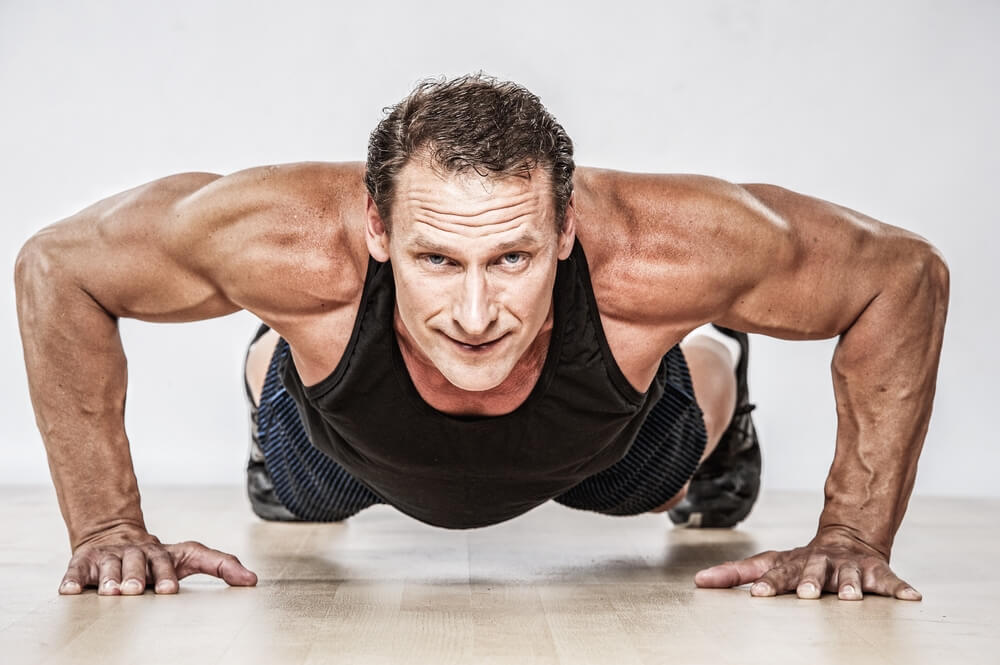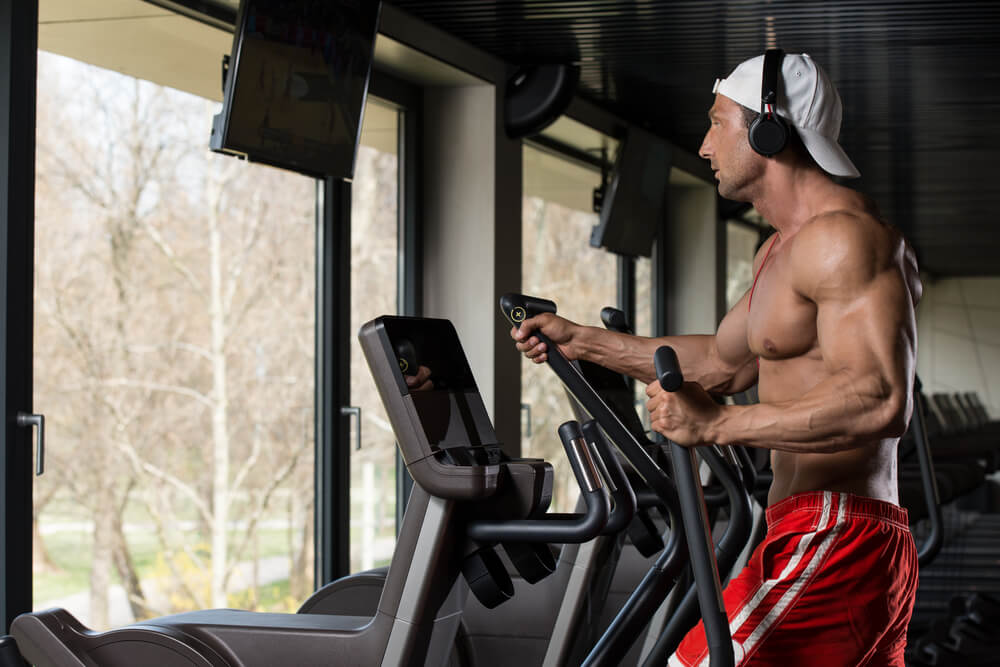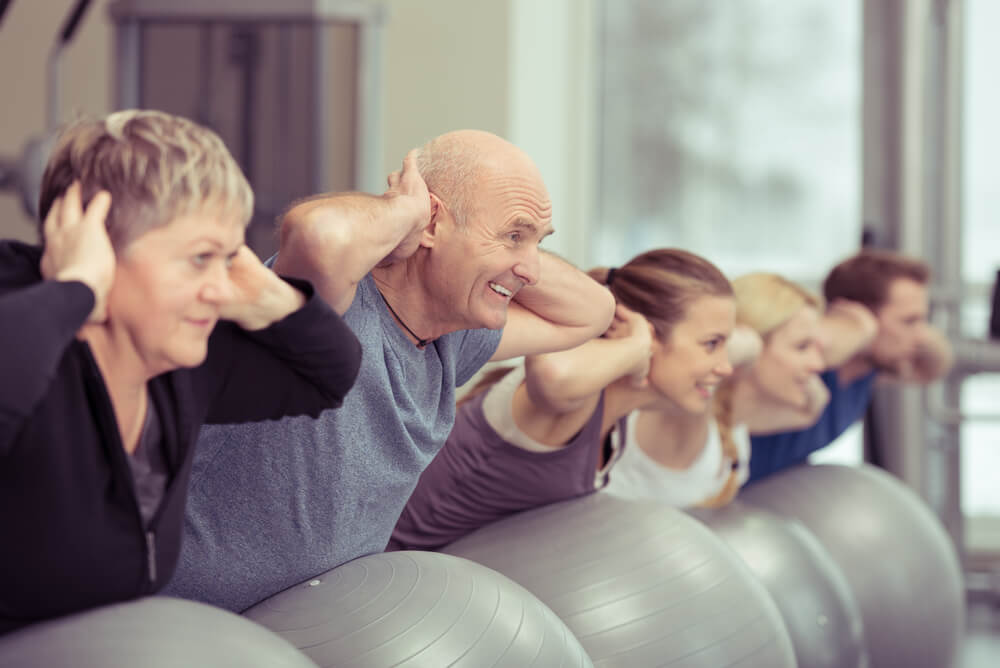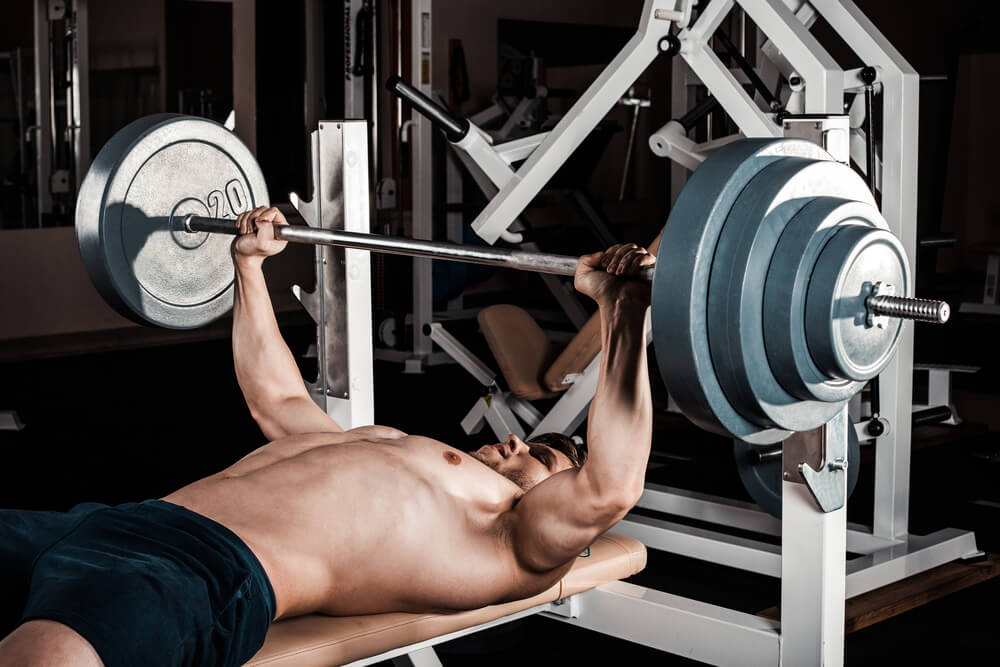Every year that goes by is just another notch on the ol’ belt. Here are the best exercise for aging muscles. Of course, you may start feeling some of those years as well. Maybe the knees creek a bit more than they use to, or that shoulder issue you had back in college tends to act up more and more now.
Whatever shape you’re in, the best way to keep yourself healthy and in peak condition is to maintain exercises.
Yes, your body is not going to replenish your cells as quickly as you once did, so packing on pound after pound of muscle likely won’t happen.
However, you can still keep your muscles fresh, your metabolic rate up and your heart strong. You just need to alternate some of your exercises to fit your aging muscles.
Best Exercise for Aging Muscles
So here are some of the best exercises you can take advantage of as your body (and muscles) mature with age.
HIIT Workouts For Older Muscles
Short for High-Intensity Interval Training, these workouts are designed to strengthen the heart and work your entire body, without putting excessive strain on it.
Basically, you will go as hard as you can for a short period of time, followed by a period of rest. Plus, the beauty of a HIIT workout is there are all sorts of different options available, it really just comes down to what you’re most comfortable with.
HIIT Workouts do more than just built heart strength though. HIIT workouts actually help improve any age-related declines found within the muscle’s mitochondria. The mitochondria, if you remember from high school biology all those years ago, is the energy source for a cell. Your science teacher may have referred to it as the battery of the cell. It helps the cell carry out its designated function.
As the body ages, the energy, or “power” of the mitochondria begin to slow, which means the performance of the cell begins to slow as well. This is a major reason why it takes longer for the body to heal itself or to fight off sickness. By reducing or even reversing the age-related issues with the mitochondria, you can improve the energy within your cells, which in turn will help you heal faster and fight off infections and sickness quicker.
Now, let’s look at the kinds of HIIT workouts you can do. It’s best to focus on what you’re comfortable with. As you continue with the HIIT workouts and your body begins to reverse the aging process (somewhat), you may be able to expand.
However, it’s best to start off with something easier.
It is important to avoid injury. If you have any kind of knee or hip pain, you’ll want to avoid impact based HIIT training, which means sprinting or jumping should be avoided.
One of the best options is a stationary bike.
There is no impact because your feet are not lifting off of the surface of the ground. When you first start off, aim for about 20 minutes or so a day. You’ll be able to pick this up more as your body becomes accustomed to it. Begin with about three minutes of light peddling on a stationary bike to elevated the heart rate and to get the blood pumping in your body. Then, go as hard and fast as you can for 30 seconds.
Give it everything you have, and then return back to your warmup speed for 90 seconds. This gives you time to catch your breath and recover.
Do this another seven more times (for a total of eight times). These first few weeks, keep it like this. You’re actually only doing four minutes of as hard as you can peddling, with 12 minutes of warmup speed (not including the three minutes of warmups at the beginning and another three minutes of cooldown peddling).
Eventually, you’ll feel like you can go further at your peak peddling than 30 seconds. When this is the case, push it up to 45 seconds and drop the rest down to 75 seconds (you can keep it at 90 if you need the longer recovery time). Don’t overdo it and if you feel any pain coming on make sure to stop,
However, this is a great way to start charging your cell’s energy source back up and, in just a few weeks, you’ll begin feeling better than you have in a long time.
Weight Training With Lighter Weights, Greater Reps For The Elder
When it comes to building muscles, you probably assume you need to really push yourself to the limits and max out your weights.
Now, there are some truths to this. When you lift heavier you’ll get stronger, which allows you to lift more, which in turn helps break down your muscles faster. However, building muscles aren’t only about lifting heavy. In fact, according to a recent study from McMaster University, you can actually see similar results with lighter weights.
In fact, you just need to reach the level of tension on your muscle fibers.
Consider walking versus running. If you walk a mile or run a mile, you’re going to burn the same basic number of calories. Yes, there are some benefits of running, like increasing your heart rate, but in terms of calorie burns, it’s more about distance than how you reach it. In a similar way, you will burn similar calories and see an improvement in your metabolic rate by lifting light, as long as you increase your reps (Men’s Health, 2016).
One of the biggest problems with aging isn’t found with your muscles.
It’s found in your bones. Sure, by improving the energy within your cells you can help improve recovery throughout the body.
However, once bone density begins to go away it isn’t something you can just restore after a few weeks in the gym.
Due to this, going heavy with your weightlifting is not a good idea as it puts far too much strain on your joints. That’s why going light is the best option.
Focus on using weights that are around 20 percent of your one set max. The goal here is not to do a certain number of reps though. Instead, pump out as many as you can during a two minute period. Your muscles should be completely exhausted and spent at the conclusion of the two minutes. You’ll also see muscle development and growth with this method.
You won’t boost strength significantly, but you’ll see the improvement in heart rate, metabolic rate, and cell development.
So what kind of lifts should you do?
Focus on the same kind of lifts you’d do if you were weight training for muscle and strength gains. You can follow the schedule we have listed:
Mondays and Thursdays: Chest and Back
Start with a bench press. If your one rep max is 200 pounds, 20 percent of this is 40 pounds. You’ll want to bench this as many times as you can during the two minutes. Now, flip over onto your chest and lift your dumbbells up to you to work your back. You can add chest presses, back flies and any other chest or back lifts you like.
Just make sure you do each for two minutes. Keep track of the number of times you do each. This way, if you find you are not able to lift anymore during a two minute period you’ll know when to slightly increase the weight.
Tuesdays and Fridays: Arms and Shoulders
Here is where you’ll want to do your shoulder press/military press, curls, triceps extensions and other arm and shoulder lifts.
Wednesday and Saturdays: Legs
Now, normally we recommend going with free weights whenever possible.
However, if you have any kind of knee pain or joint pain in your hips, it is better to perform these exercises with machines. It reduces some of the strain placed on your joints while also cutting down on any wobbling free weights might cause, cutting down on the chance of injury. Focus on the leg presses, leg curls, and squat machines.
**As a note, whatever day you are lifting, make sure you execute perfect form and perform the entire lift.
Don’t try to cheat and give a half-life or use poor form just to increase the number of reps you squeeze in during the two minutes. This not only cheats yourself out of a quality workout but it also increases your chance of injury.
Swimming: The Perfect Combination of Resistance and HIIT Training
No matter what age the calendar makes you, chances are you’ve felt some tweaks and pain in joints and muscles over the years.
Maybe you use to jog every day but now that’s just not an option as heavy impact kills the knees. Or perhaps that baseball shoulder injury you had in high school is just now starting to flare up. We all have and develop those kinds of pains. Don’t let these pains prevent you from exercising though. You just need to alter what you do so you still get a great workout without feeling pain and discomfort.
That’s why you need to check out the pool.
Water workouts are great for a number of reasons. First, you’ll literally work every major muscle in the body. Outside of maybe a few muscles in your face used for smiling and frowning, all other muscles are engaged. Plus, the water itself adds resistance to the workout, which makes it the perfect spot for a combined HIIT and resistance training session. Now, you shouldn’t completely forgo a traditional weight training session, and it’s still good to switch it up and go with the station bike or other low impact cardio device. However, if you’re dealing with pain and want a way to avoid that, look towards swimming (plus it gives you an excuse to rock out in that Speedo you’ve been eyeing).
You can go with HIIT sessions in the pool if you’d like. This will get your upper body involved. Go with a higher intensity stroke (like a front stroke or, if you’re able and have the form, the butterfly or breaststroke). It will take an underwater watch, but you can still swim all out for 30 seconds, and then take the next 90 seconds easy. If that isn’t an option, you can swim a length of the pool as fast and hard as you can, and then go easy for another three lengths.
Also, don’t scoff at water aerobics. Yes, some of the classes taught at senior centers might be a bit too easy if you’ve been workout out for some time, but there’s a reason why professional athletes often work out in pools while trying to build their strength back up following an injury. You can use the pool weights for a decent cardio exercise (Fox New Health, 2017).
As the body ages, it will begin to slow down naturally. Cells may not have the same kind of energy, which results in slower recovery times.
However, you don’t have to just sit down and accept it.
In fact, by adding in HIIT workouts to your weekly routine, you can actually turn back the clock and restore much (if not all) of the energy your body has lost, which will improve recovery time and help your body avoid sickness while fending off illness at the same time.
You just need to focus on exercises that are right for you and that work with your current condition.
Whether you haven’t worked out in a while or there are certain pains you experience, you don’t want to do something that will push these pains as that can lead to additional problems down the line.
Conclusion
So experiment with the lightweight training and low impact cardio options. The beauty of HIIT is just about every kind of cardio workout can incorporate it, so once you find the cardio workout that is comfortable and works best for you, spiral out from there.
You’ll find it really helps as an exercise for aging muscles.
-Terry Asher
Terry Asher
Latest posts by Terry Asher (see all)
- Better Family – Product Review Liquid Daily 2 oz - Dec 16, 2024
- Post-Workout Recovery: The Key to Optimal Performance - Nov 25, 2024
- Pre-Workout Supplements – Everything You Need To Know - Nov 18, 2024














I’m going to try this! (lifting as many as I can for 2 minutes!) Awesome idea!!!! Thanks!!!!!
(Turning 50 this year – scared as hell.)
No problem Deb!
Good luck with the workout 🙂
-Terry Asher
[…] via- https://gymjunkies.com/best-exercise-aging-muscles/ […]